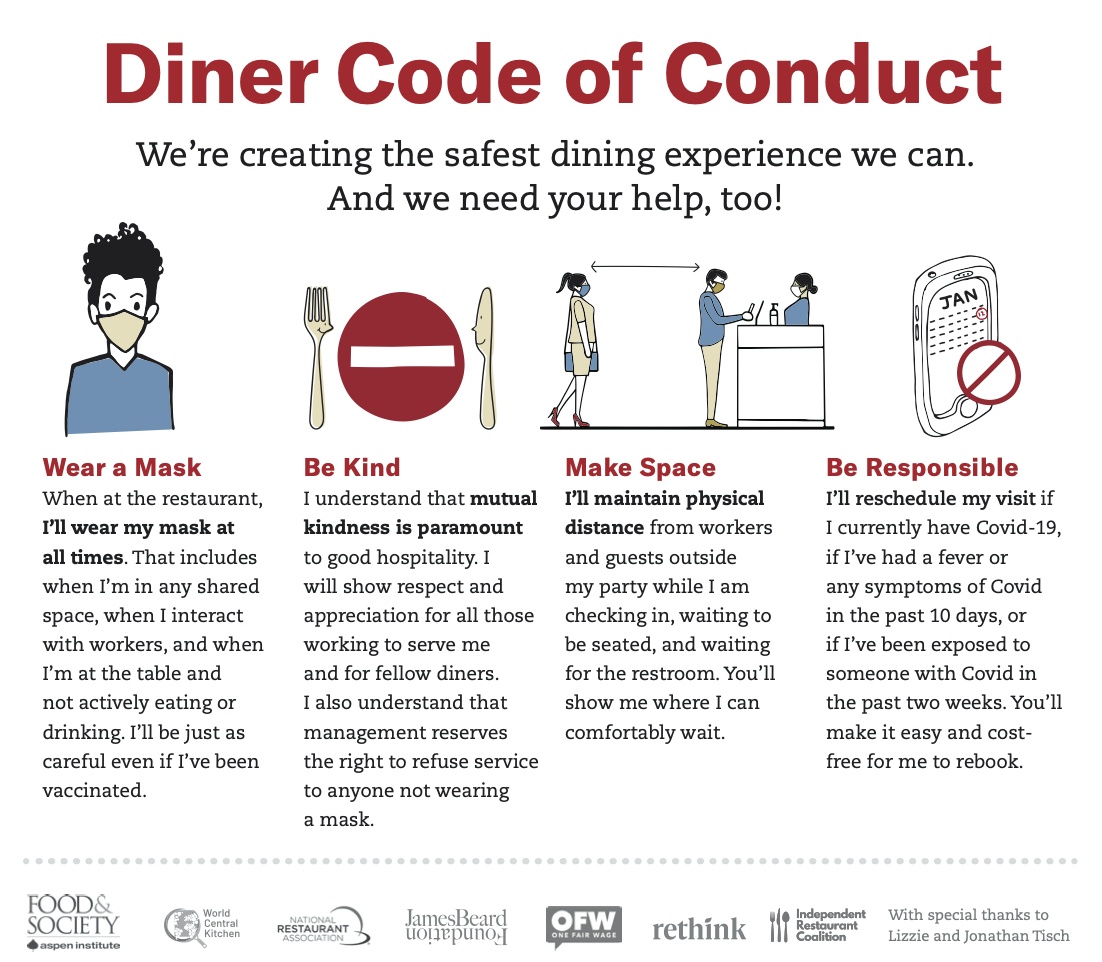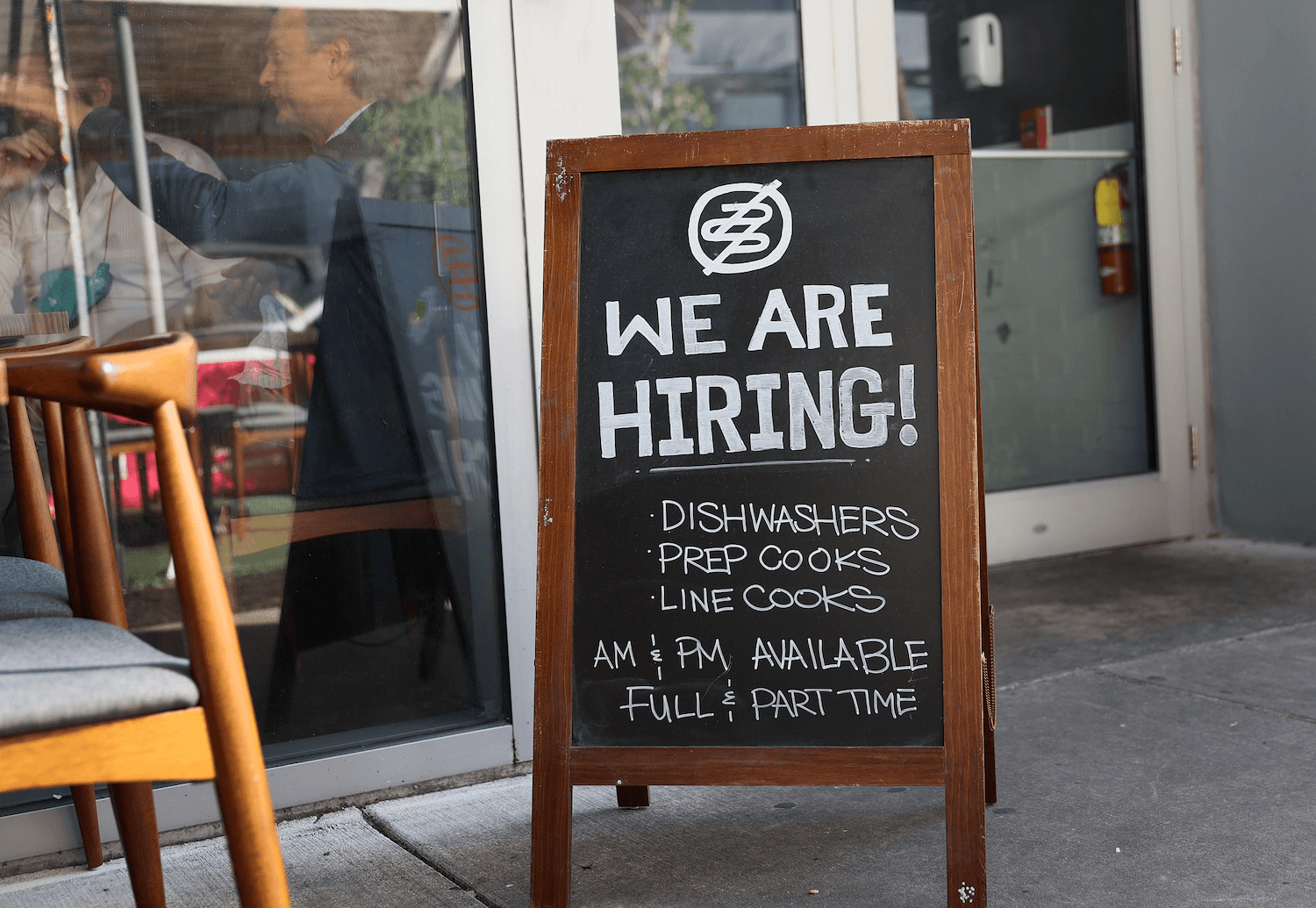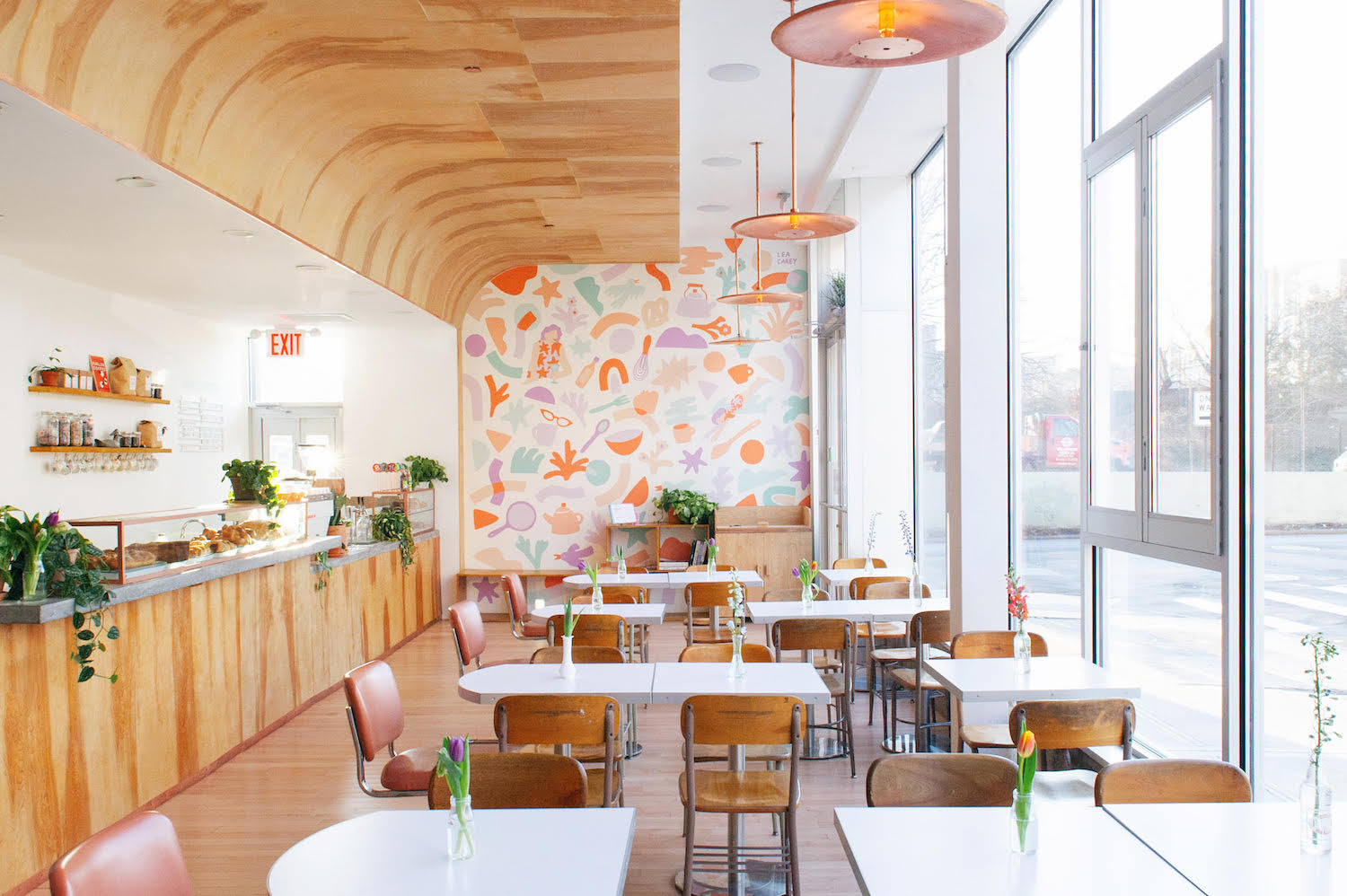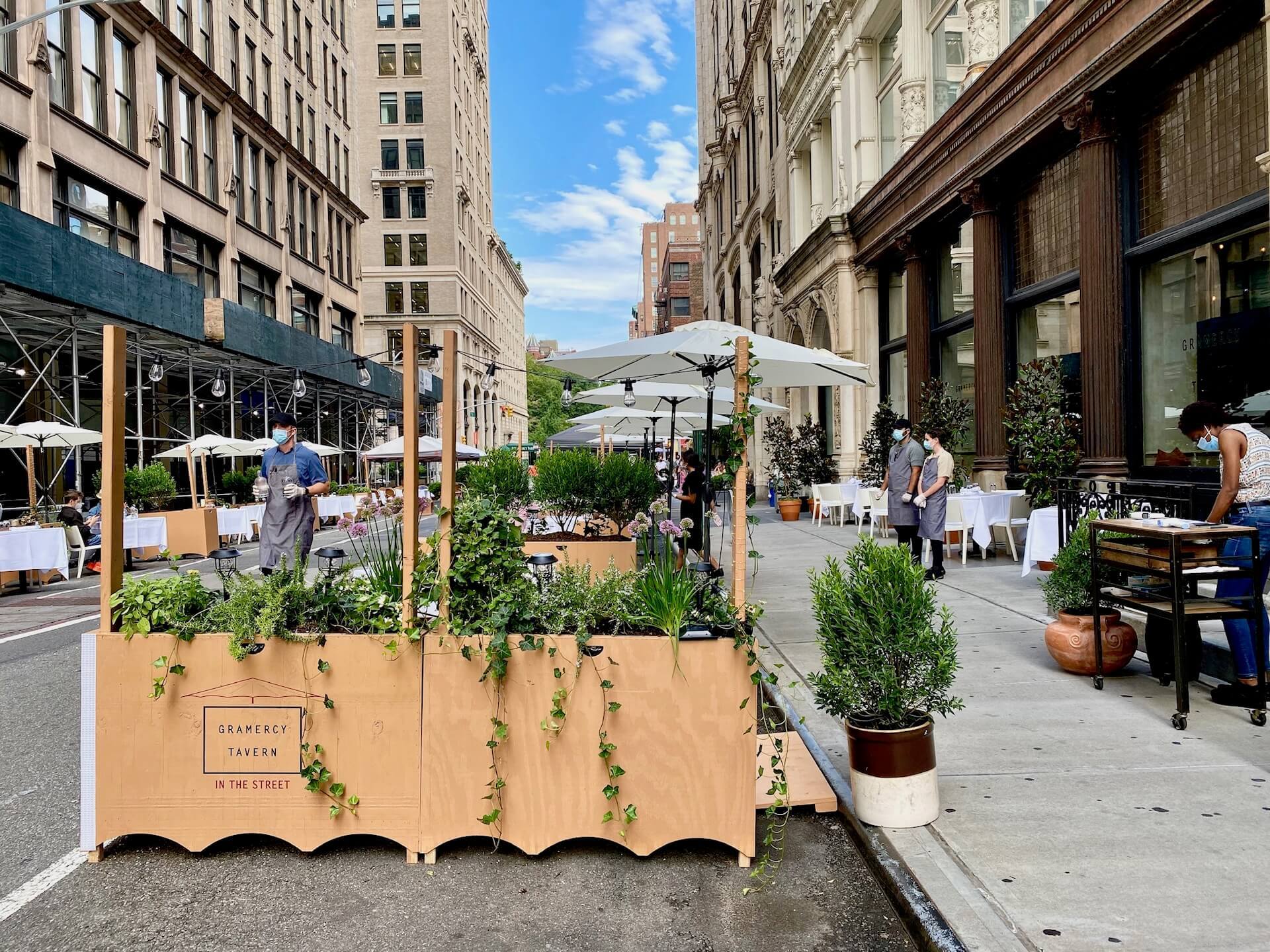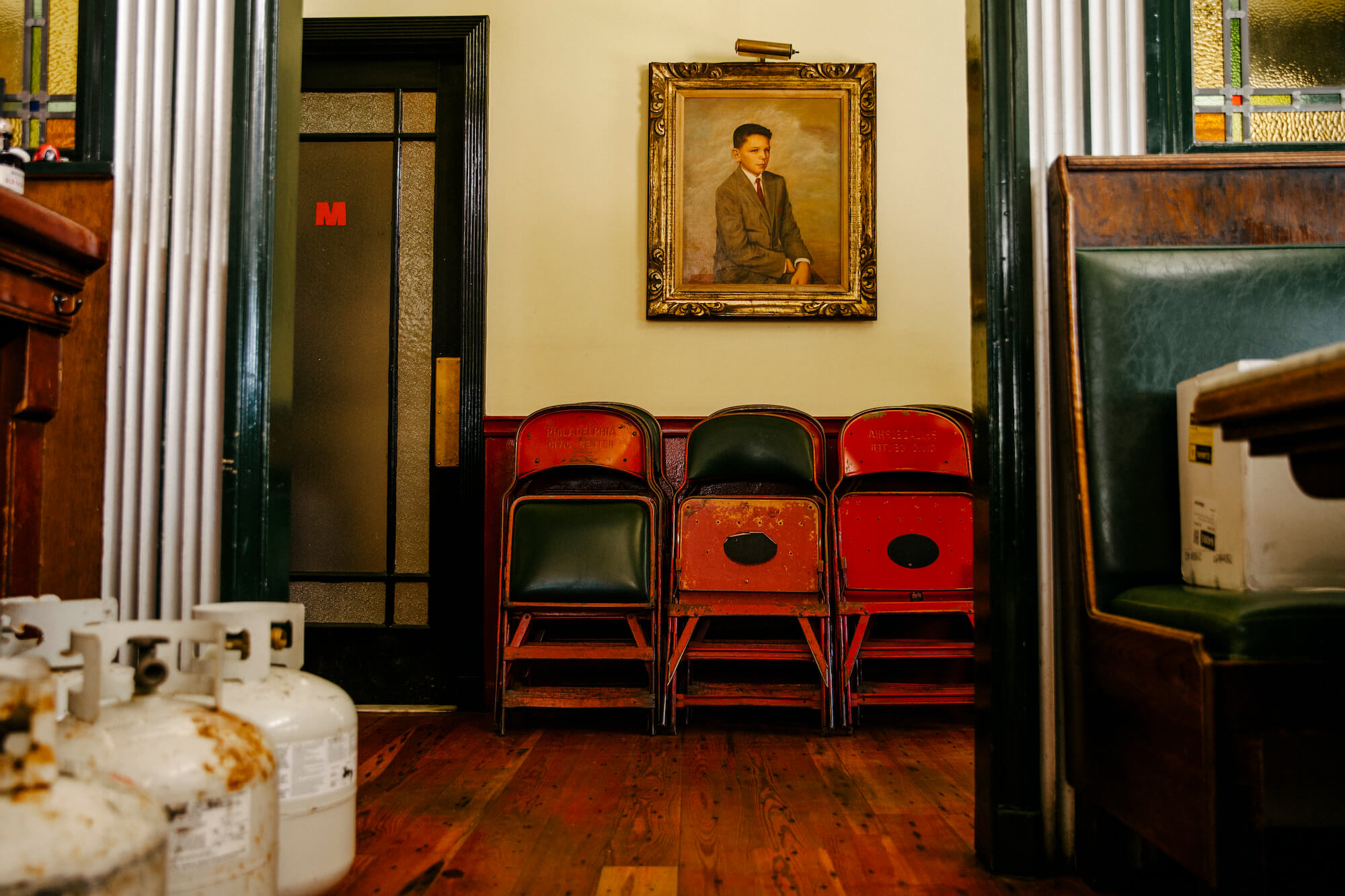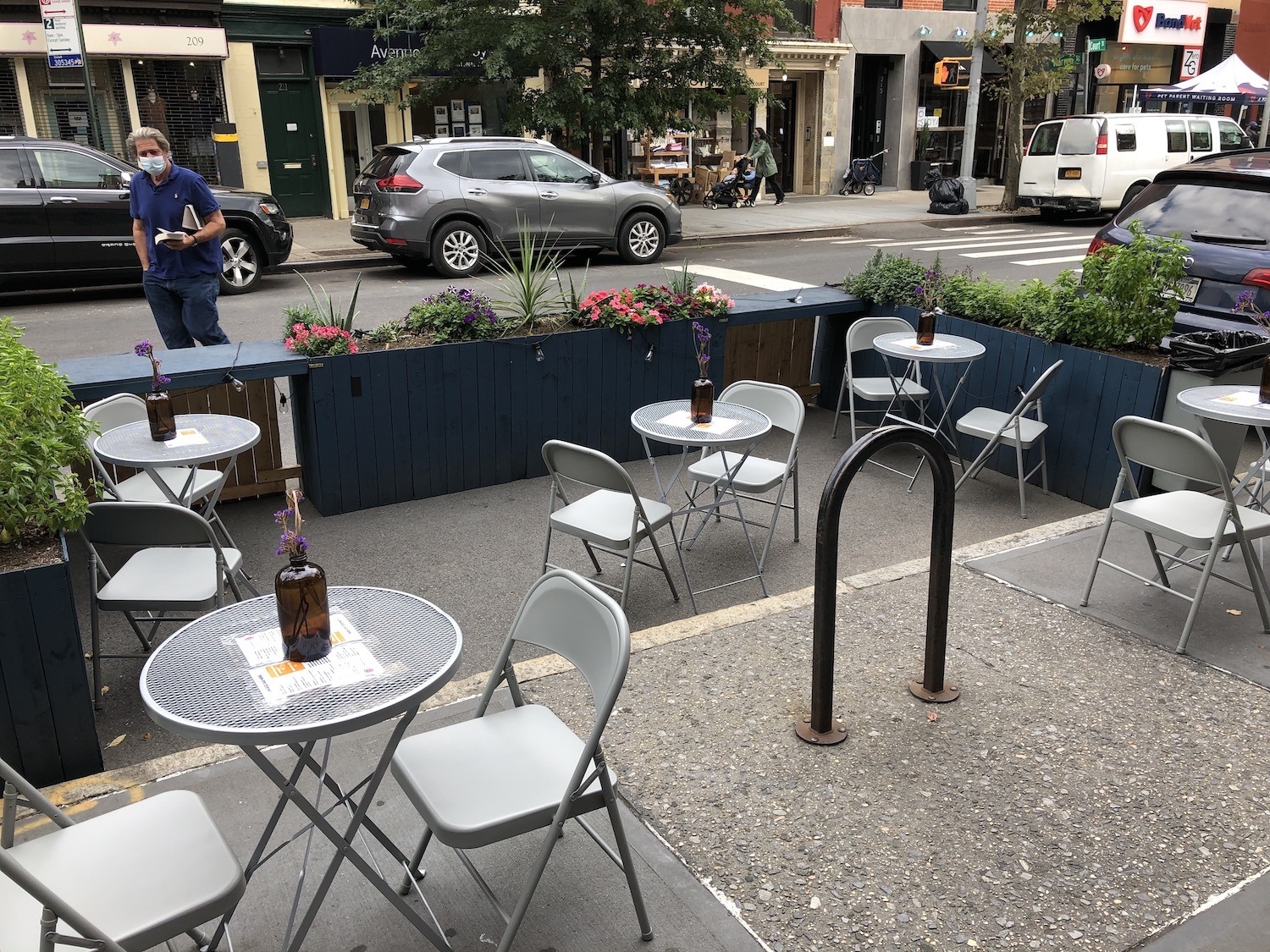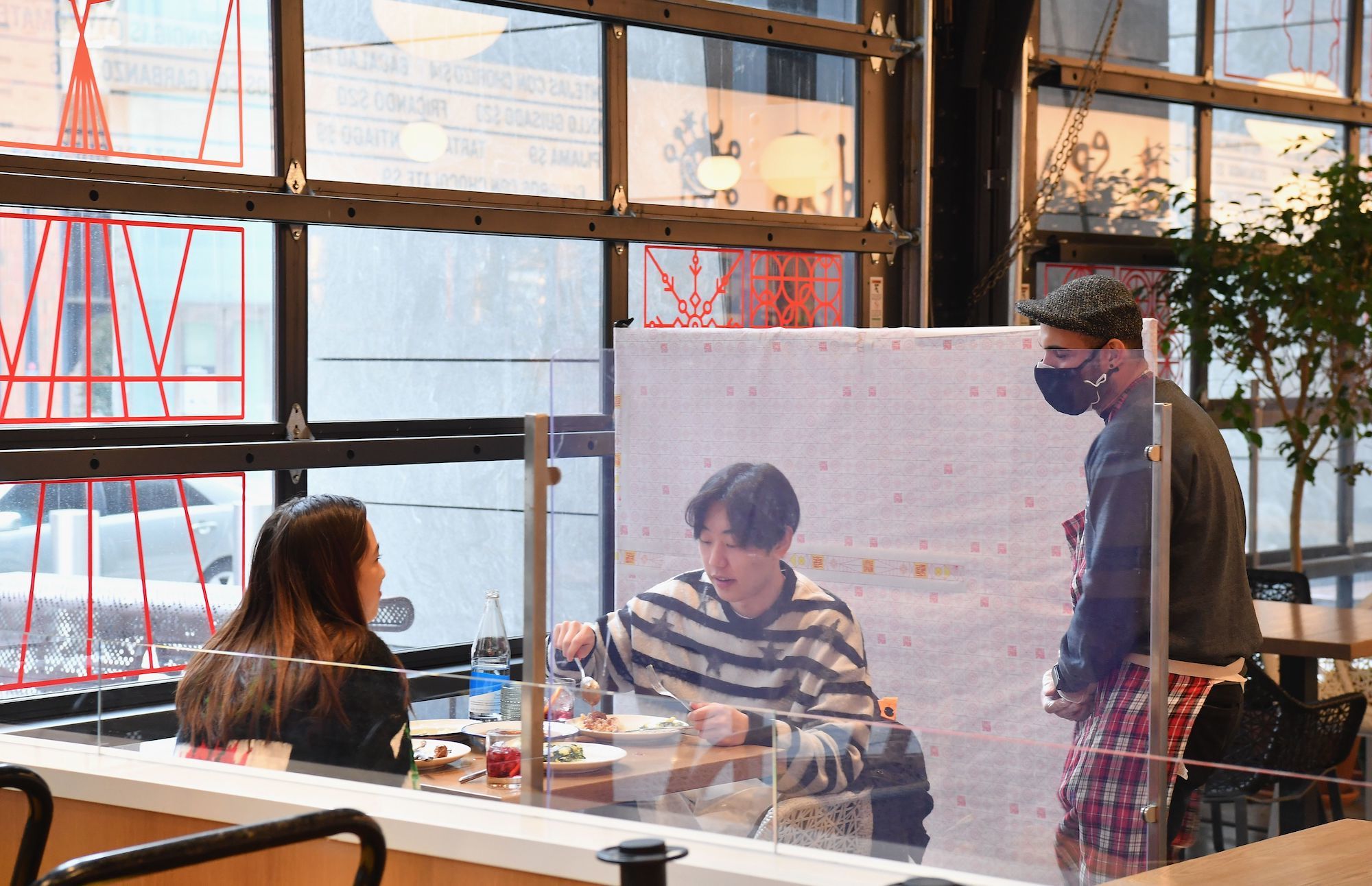
ANGELA WEISS/AFP via Getty Images
As vaccinations plateau and the virus continues to circulate, a new set of safety guidelines—including a “Diner Code of Conduct”—has some powerful early adopters.
It’s not often that the National Restaurant Association, a full-throated opponent of the $15 minimum wage, and One Fair Wage, an organization entirely devoted to raising pay for restaurant workers, endorse the same guidelines. On one thing, though, they appear united: A new set of recommendations, released by the Aspen Institute’s Food and Society Program, for safely operating indoor dining as local reopening plans inch forward.
The guidelines, released in April, are intended to help restaurant operators navigate a world in which an increasing proportion of guests and workers—but not all—have received a Covid-19 vaccine. They include a Diner Code of Conduct, which emphasizes masking and kindness, a Covid Pledge for restaurants, and a set of ventilation recommendations. Organizers hope they’ll be adopted by public health departments and the restaurant industry nationwide.
As Covid-19 caseloads drop, and occupancy percentages rise, more and more diners are venturing out, which presents a host of challenges for dining rooms that have relied primarily on takeout and outdoor seating throughout the pandemic. “We have a demand that’s the same as our pre-pandemic 2019 numbers,” said Steven Satterfield, executive chef and owner of Miller Union, a Southern restaurant in an old warehouse in Atlanta that opened in 2009. “It’s insane and it’s intense.”
“They talk about air exchange and all these things, but we’re not engineers. We don’t know what that means, or how to figure that out.”
Conventional wisdom about safety priorities has shifted substantially since last March, when shoppers sanitized their groceries and Clorox flew off the shelves, to a current concern with masking and airflow. Corby Kummer, executive director at the Food and Society Program, said the group anticipated the shift long before the Centers for Disease Control (CDC) issued updated recommendations in April along the same lines. (Disclosure: Kummer was a contributing editor for a previous iteration of The Counter.)
“It just seemed so relentless and unimportant,” Kummer said of the focus on surfaces. “We felt for a while we were de-emphasizing [surface sanitation] in this new set, and we had to tread very lightly .. and then the CDC started de-emphasizing it when we were in press and [the guidelines] had already been designed. Our sense of relief was so palpable.”
So how do you improve the airflow in a cramped dining room? It’s a complicated, high-stakes game of Tetris—you don’t want to seat anyone in front of a big intake vent, where they might be smacked in the face with a blast of incoming air carrying droplets from other diners’ coughs. The same is true with portable air purifiers: You want to make sure they’re aimed vertically, not horizontally, so that they don’t waft viral particles from one table to another, a setting contrary to many factory defaults. The report also endorses cheap plexiglass barriers, available for $75 to $100 each, which can disrupt horizontal airflow (but aren’t a one-size fits all solution without added ventilation).
Solving that puzzle has not proven easy for restaurant operators. “The health department in our community hasn’t said ‘these are the filters you should have,’” said Jody Adams, chef and co-owner at Porto and Trade, two full-service restaurants in Boston. “They talk about air exchange and all these things, but we’re not engineers. We don’t know what that means, or how to figure that out.”
Kummer’s team worked with an architect and a ventilation engineer to study the airflow question, ultimately distilling the information into a single set of rules. “I think the thing I’m most proud of in this new set is one-page ventilation guidelines, because those took eight months to get right,” he said. The recommendations are meant to be useful for cash-strapped restaurant owners who have little remaining leverage with their landlords: Inexpensive and minimally invasive.
To that end, Kummer’s team bought several different affordable air purifying units and tested each one. “Many had ridiculous snake oil-type gizmos like ionization and ultraviolet filters,” he said, add-ons that were not ultimately necessary in the long run. The guidelines stop short of recommending specific products—they don’t want to inadvertently trigger price gouging on certain purifiers—but do guide restaurants toward what’s important: the number of air changes per hour, the direction of the discharge, and high-efficiency HEPA filters. Restaurant owners are advised to use this calculator developed for schools to determine how many portable filters to purchase.
“I hope that [the guidelines] will become a national standard for restaurants, a standard that’s adopted by the restaurant industry, not opposed by the city.”
No level of air filtration will completely relieve diners and restaurant owners of personal responsibility. “You can’t police people’s vaccination records, so we treat everybody as if they haven’t been,” Satterfield said. That means diners have to wear their masks when they get up to go to the bathroom, and maintain physical distance from other tables. Satterfield said he communicates these rules to guests via text message and email confirmation when they book reservations, but sometimes people forget—especially after a glass of wine or two. In those cases, servers have to step in. “Most people are like, ‘oh, gosh I’m so sorry,’” he said. “Other people are really pissed off.” The Aspen Institute’s Diner Code of Conduct seems to recognize the inherent awkwardness of these interactions, imploring guests to “be kind” and understand that management may refuse service if they refuse to mask up.
Kummer hopes the guidelines will become a national standard for the restaurant industry. He’s received funding to conduct online trainings, which he hopes will begin in a few weeks. Ideally, local health departments will elect to grant restaurants some sort of Covid safety seal of approval once restaurant owners and their staff complete the online course. The training could be offered as an add-on or a complement to the National Restaurant Association’s ServSafe training, a ubiquitous food safety certification program that is already required in many cities. Kummer has committed to providing all trainings free of charge, and he plans to start by promoting them to members of the National Association of City and County Health Officials.
“I hope that they’re able to do what they’re saying they’re going to do—that [the guidelines] will become a national standard for restaurants, a standard that’s adopted by the restaurant industry, not opposed by the city,” said Adams. “I think if this becomes a pandemic prevention certification, that would be a good thing—then it’s not just up to the restaurant and the restaurant workers. It’s up to customers as well, and that’s where the rubber meets the road, right?”
In a more perfect world, some combination of high vaccination rates and low transmission numbers will nudge the U.S. across the finish line to herd immunity, an outcome that seems increasingly unlikely. In a best-case scenario, Kummer said, the restaurant safety recommendations will be obsolete by November, but he expects that they will remain relevant through the spring.
